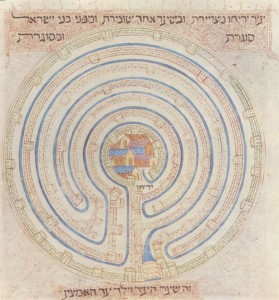
The Potential and Promise of Open-Source Judaism
One community's pioneering effort to make its materials of worship more widely available and remixable.
Alan Jacobs – Alan Jacobs is the Clyde S. Kilby Professor of English at Wheaton College. He blogs at ayjay.tumblr.com.
The Atlantic, 12 June 2012
New technologies are naturally and generally controversial, but perhaps nowhere more so than in religious communities. For many religious leaders (and their followers), recent digital technologies are corrosive solvents of community life: the old ways are surely best. For others, new technologies offer opportunities to extend the reach of religious bodies, to draw more people into the fold.
One might think that a highly traditional religion like Judaism — whose core practices are so ancient and burnished by custom — would be inclined to techno-suspicion. But Aharon Varady doesn't see it that way: for him, digital technologies can come to the aid of traditional practices. Varady is a man of wide-ranging gifts who, among other things, runs the Open Siddur Project. A siddur is a Jewish prayer book containing the daily prayers, and the Open Siddur Project is working to create the first comprehensive database of Jewish liturgy and liturgy-related work — and to provide an online platform for anyone to craft their own siddur. In this way Varady hopes “to liberate the creative content of Jewish spiritual practice as a commonly held resource for adoption, adaptation, and redistribution by individuals and groups.” For him, openness is key to the success of the project.
The Open Siddur Project strikes me as a deeply thoughtful, innovative way of trying to make new technologies and modern religious life reinforce each other, instead of being inimical or at cross-purposes. So I proposed that Aharon answer a few questions about the ideas behind his work, and he readily agreed. Here's our conversation.
You describe Open Siddur as a project in “open-source religion.” What do you mean by that?



